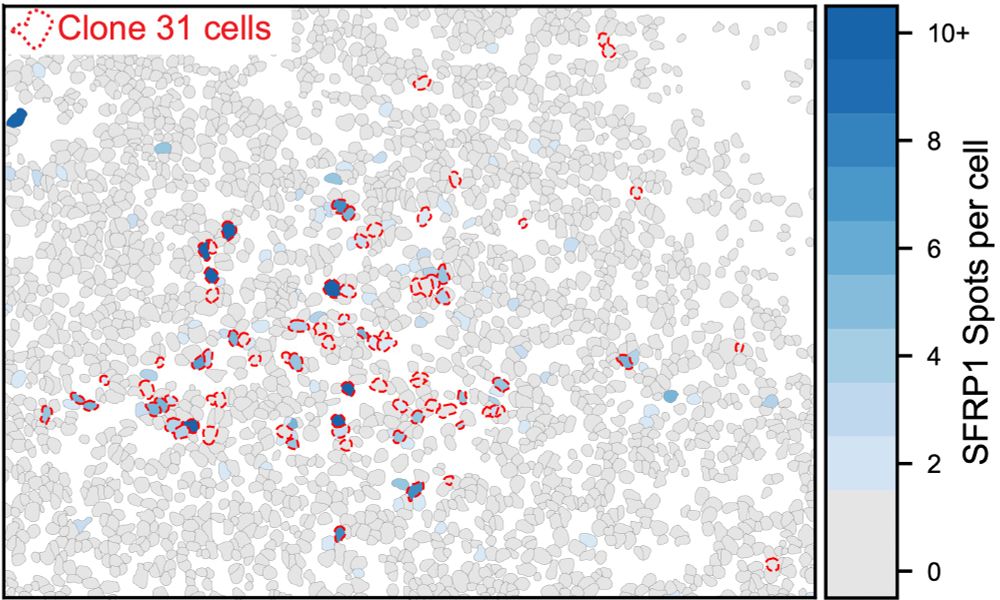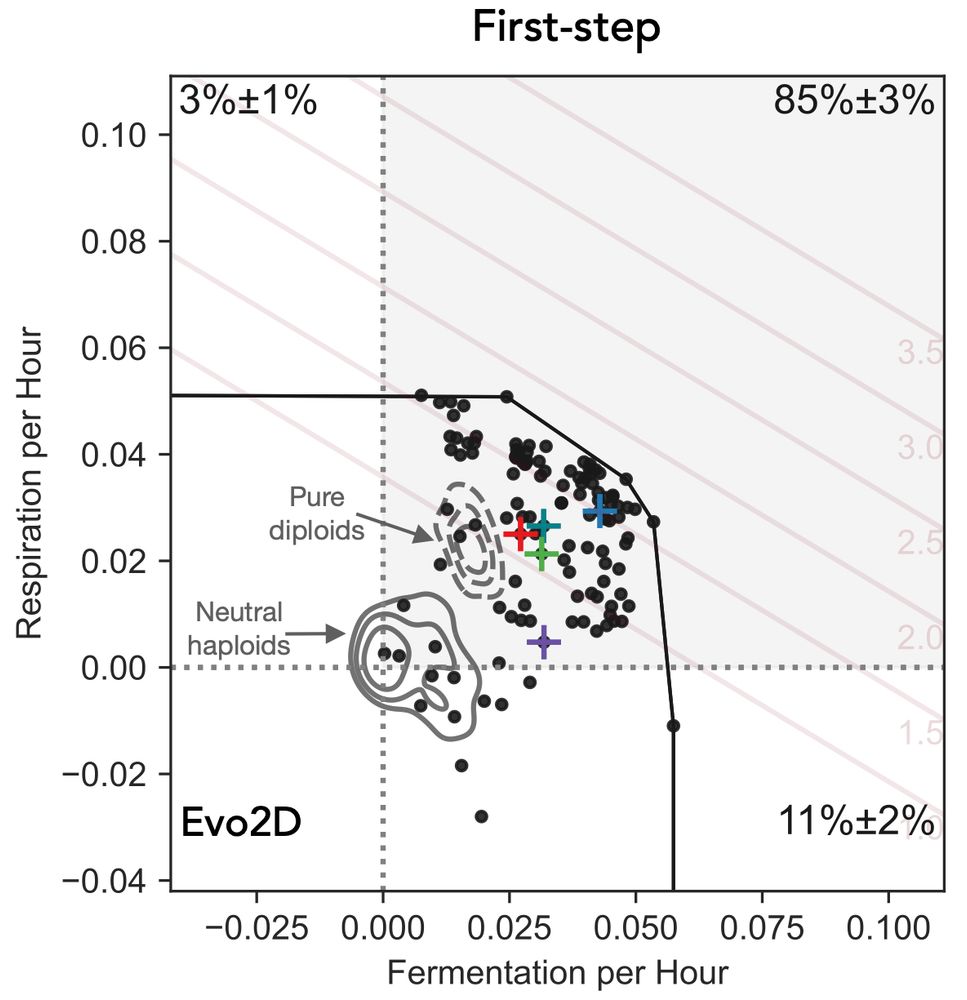







However, others have improved performance in both growth phases, albeit via a series of steps that tend to improve one or the other, suggesting generalists can still evolve. 9/n

However, others have improved performance in both growth phases, albeit via a series of steps that tend to improve one or the other, suggesting generalists can still evolve. 9/n
This suggests that already in the 2nd-step of evolution, we have begun to run out of mutations that improve both growth phases to a large extent. 6/n

This suggests that already in the 2nd-step of evolution, we have begun to run out of mutations that improve both growth phases to a large extent. 6/n
We constructed barcoded populations from five 1st-step mutations and evolved them in the same environment as the 1st step.
We then isolated 100s of mutants and quantified their performances in growth phases. 5/n

We constructed barcoded populations from five 1st-step mutations and evolved them in the same environment as the 1st step.
We then isolated 100s of mutants and quantified their performances in growth phases. 5/n
Or if we begin to run out of these mutations, mostly finding mutations that improve one trait or the other (right). 4/n

Or if we begin to run out of these mutations, mostly finding mutations that improve one trait or the other (right). 4/n


